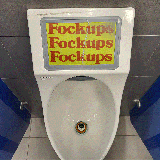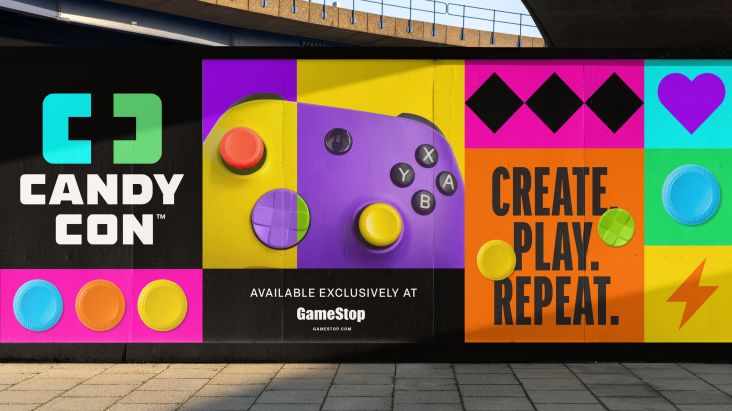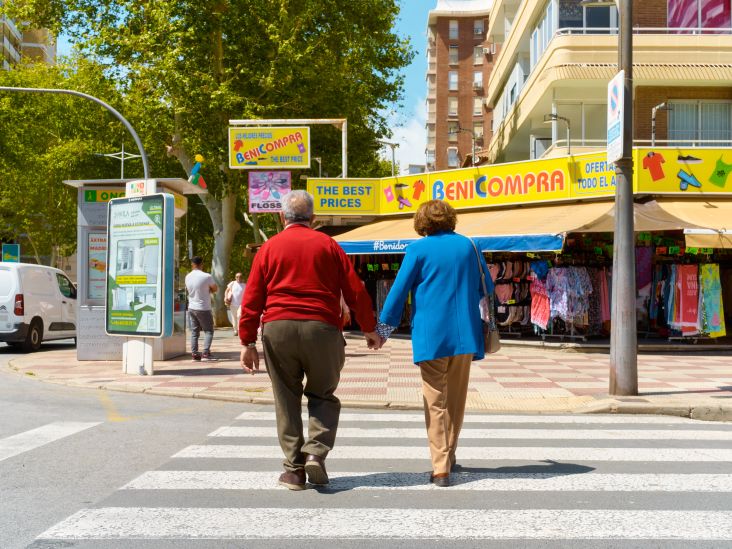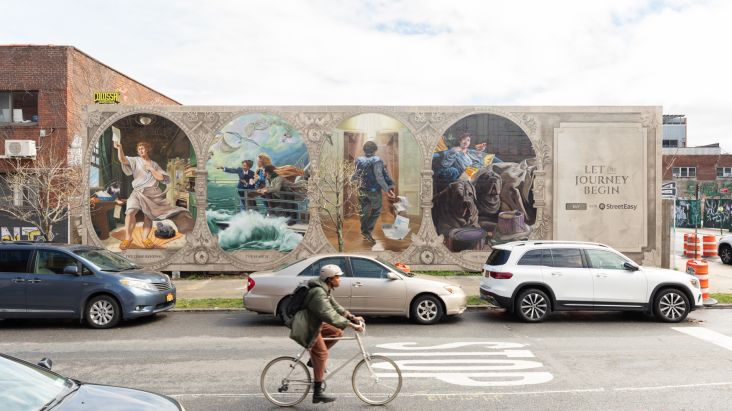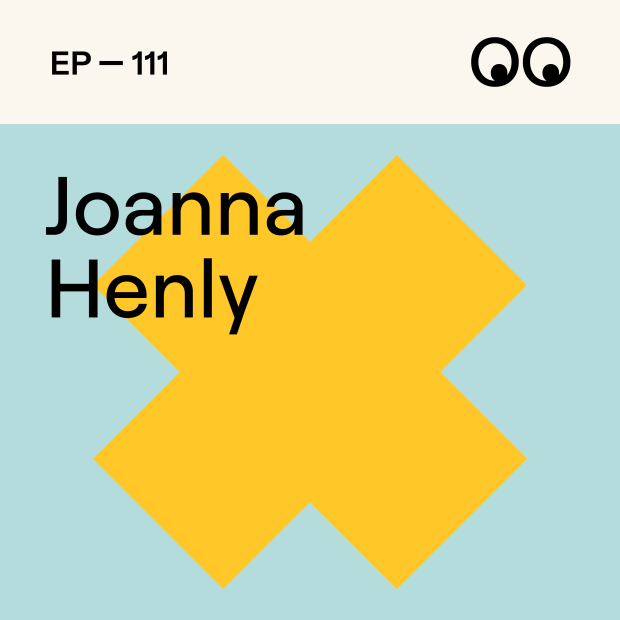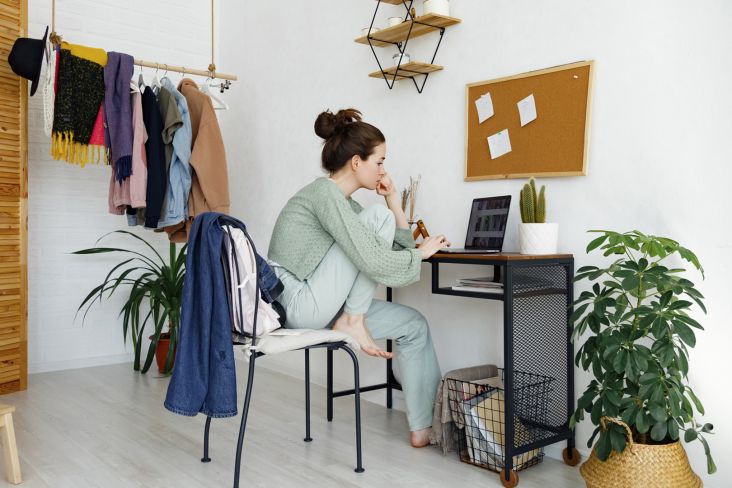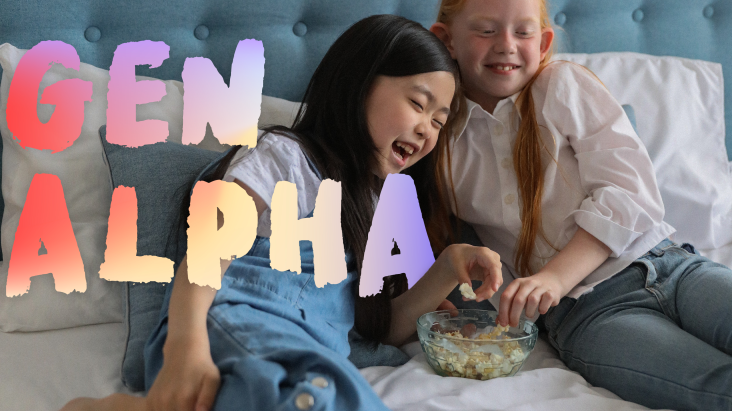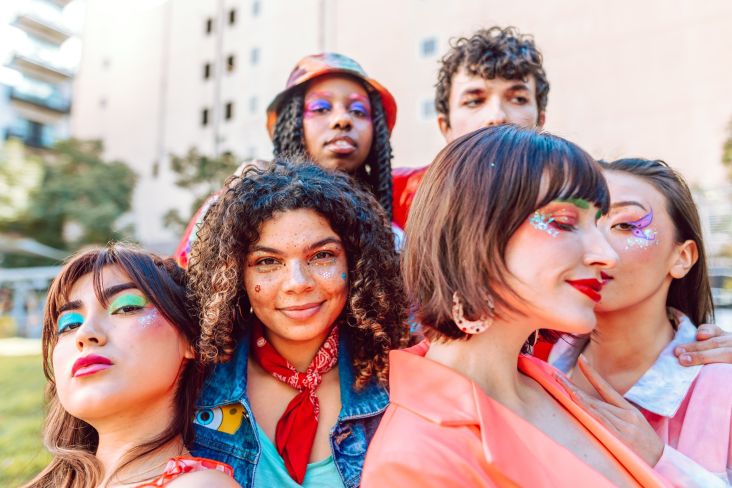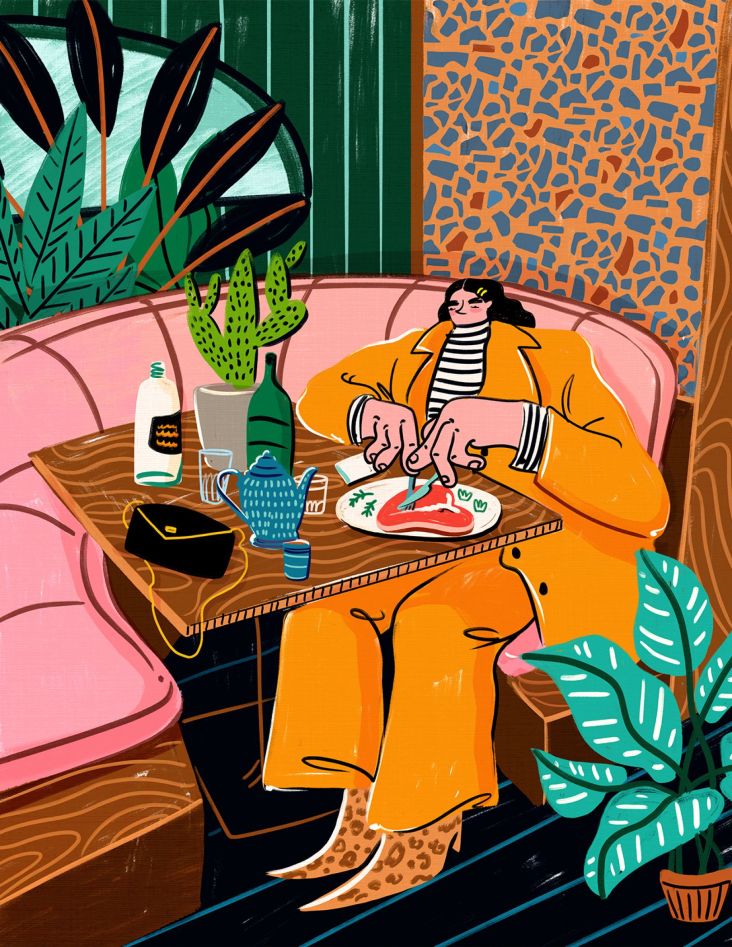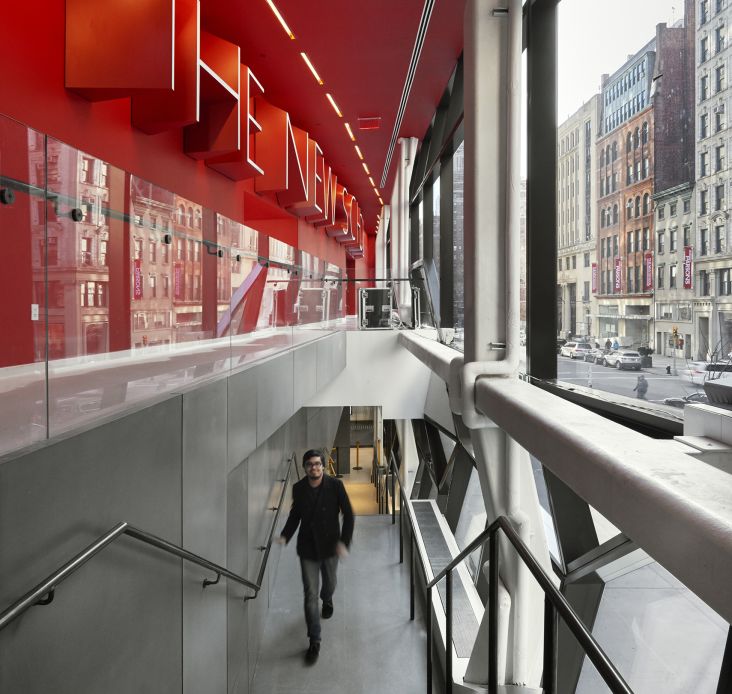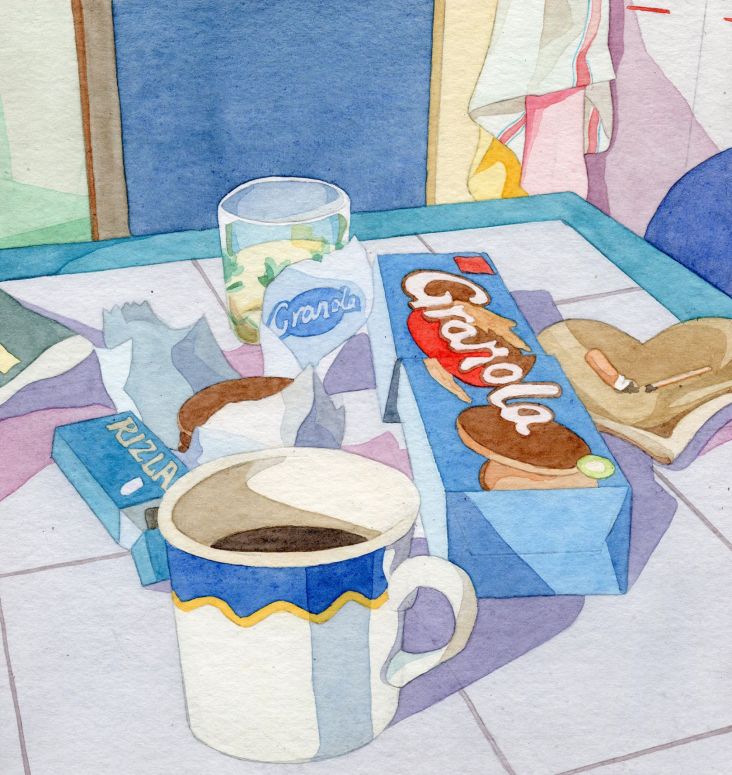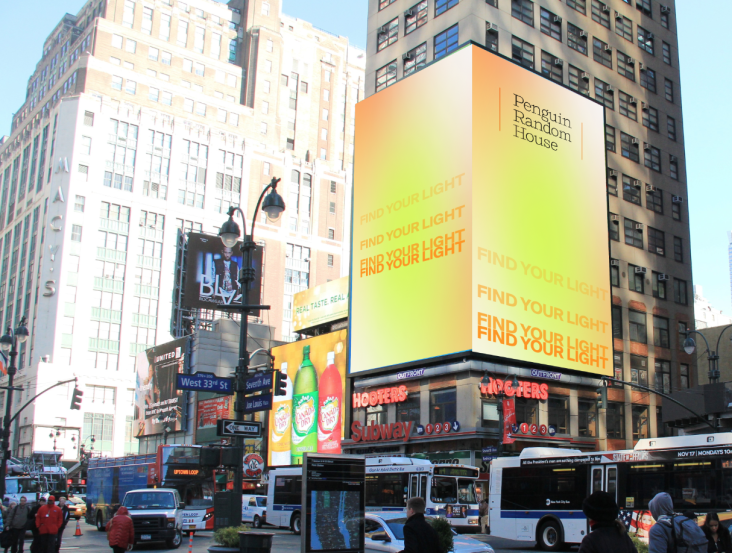How 2022 is shaping up for creativity with fascinating insight from industry leaders
If 2020 was the storm that pulled our world apart, 2021 was the chance to start putting it back together and rebuilding. But what's it actually been like for design leaders at ground level?
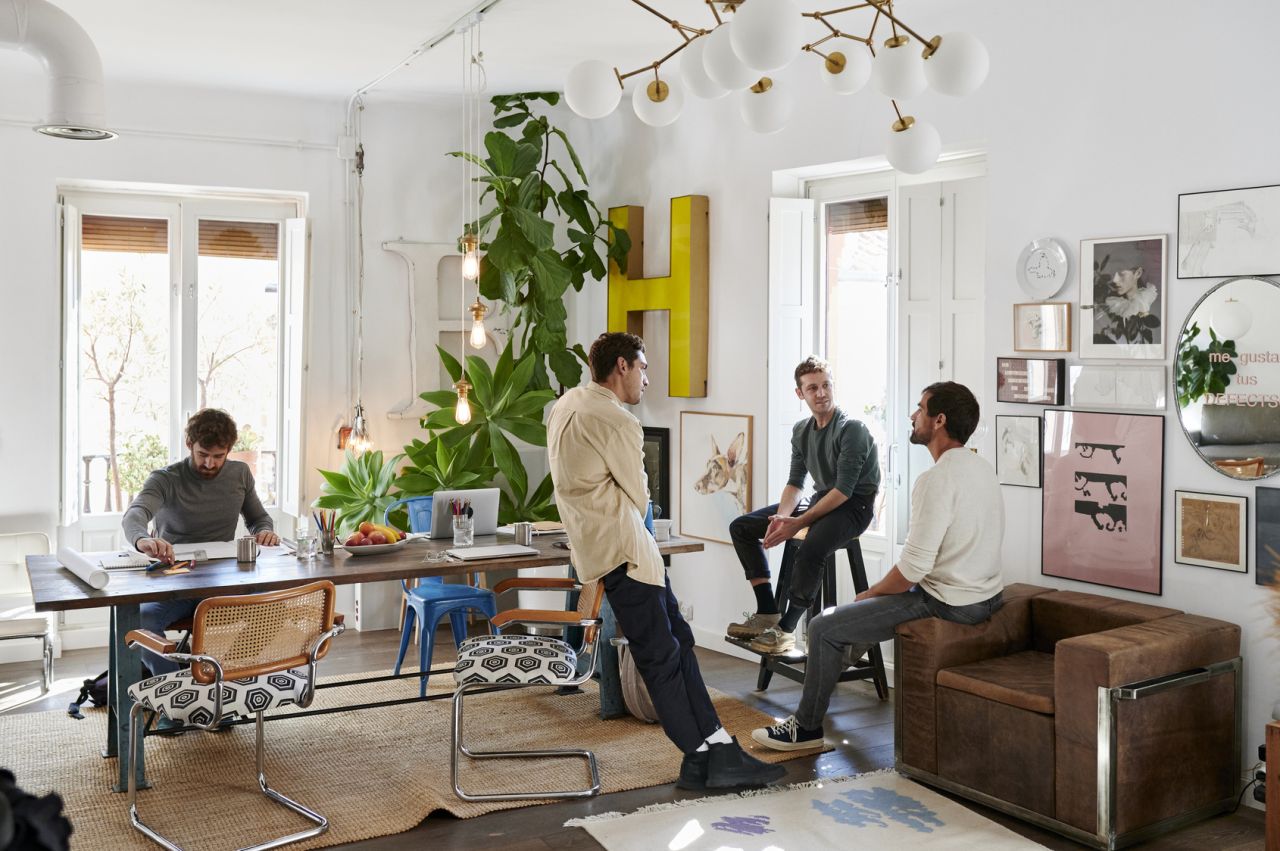
Image licensed via Adobe Stock
As part of The Review, our series looking back at the last 12 months, we've gathered together a bunch of industry experts to hear about their experiences and the lessons they've learned.
We share their thoughts below, and several themes come through strongly. The first is that, despite everything, the design industry is emerging from the pandemic in broadly good shape. While the challenges can't be understated, agency life goes on. And for many, the opportunities offered by remote working culture have been a boon, allowing companies to both expand their global operations and develop new hybrid ways of working.
That's involved a lot of Zoom calls, of course, but it's also meant a new appreciation for in-person working. As design agencies have returned, tentatively, to the studio, it's become clear to all that the spontaneity that physical contact brings is vital for a truly vibrant design business. So striking the right balance between remote and physical has been one of the big challenges of 2021.
The other has been surviving, let alone thriving, in an increasingly digital world. As countless designers have told us, it's only work with purpose that stands out these days. The era of playing it safe is well and truly over, as audiences demand not only improved products and services but ones with clear social and environmental values.
But don't take our word for it. Read on to hear, in their own words, exactly what our experts have to say about the year just gone and the lessons they'll be taking with them into 2022 and beyond.
1. Don't panic!
One lesson that all agencies had to learn in 2021 was to stay on course and not panic, whatever the world threw at them. "The creative industries have been through varying degrees of discomfort in the last 12 months," says Jos Harrison, global head of brand experience and design at Reckitt. "This has mostly been down to massive pressure from clients to 'respond' to the immediate challenge of COVID-influenced – mostly transient – behaviour shifts.
But, Jos points out, as creatives, our role is to think beyond the immediate and keep an eye on the bigger picture. "Of course, being reactive to major points of impact, like the pandemic, is important. But the real measure of success lies in creating brands that can flex and stay relevant no matter the landscape."
2. Vulnerability can be harnessed
It can sometimes seem impossible to plan ahead in an increasingly chaotic world, and it's tempting to throw in the towel. But Malex Salamanques, director at global cultural and creative consultancy Space Doctors, offers a different approach.
"I cherish the moment when I stopped fighting the feeling of vulnerability and started exploring what to do with it," she says. "As a designer, semiotician and meaning maker, I became better at reading my own intuition, using it as a compass to navigate the very volatile reality we all experienced."
Rather than fight the feelings of things being out of control, she channelled this into all areas of her creative practice, from packaging analysis to creating concepts for international brands. Along the way, she learned "to interrogate and take refuge in the mundane of day-to-day, for it has become an infinite source of inspiration and wisdom to better understand the current world, helping to create services and brands that resonate more deeply with people."
3. Find new ways to be inspired
One of the most immediate impacts of the various lockdowns was removing or closing off the traditional ways we gather inspiration as creatives. As Kirsty Minns, executive creative director at Mother Design, recalls, "The early 2021 lockdown was a massive test for the design industry. With so many of these avenues taken away, we were forced to find new ways of being inspired.
"Supermarket shelves became the museum, magazines became saviours, lyrics inspired layouts and inspiration from colleagues was shared over Zoom. We learned to challenge our usual go-to mediums of inspiration and find new ones, to make sure we always create work that feels fresh and new."
In 2022, she intends to continue to innovate around sources of inspiration. "We plan to get more hands-on facilitating workshops; make sure our viewpoints are constantly widened with a varied programme of speakers; continue inspiration sessions with our global family; as well as find new and unusual forms of inspiration at the start of every brief."
This is as important at the individual level as it is at the agency level. "Spending so much of my time in the pandemic at my desk led to a bit of burnout from all that stasis," recalls Frank William Miller, Jr., design director at Matter Unlimited. "So I've had to learn, and will be making it more of my daily praxis, to get up and move around and go outside when I'm feeling stuck, rather than sitting at my workstation and trying to force what won't come."
In 2022, brands might re-establish optimism and openness by asking themselves continually how they are building the kind of future people want and staying connected to the voices of their customers.
4. Purpose matters more than ever
If 2021's lockdowns have taught us anything, it's the power of digital content, says Dara Lynch, chief operating officer of D&AD. "While we were all finding our feet in the early days of the pandemic, we've been able to take a more considered approach to digitalisation this year," he reports. "This has included transforming the D&AD Annual to a free-to-access digital platform, which now reaches and is utilised by far more creatives than ever before."
But with so much communication taking place on digital platforms, how do you ensure your message doesn't get lost? "Purpose matters more now than ever," believes Katie Klencheski, founder and creative director at SMAKK. "It takes an f-ing lot to break through the noise these days. We're seeing smarter consumers, louder brands, TikTok, more influencers, and well, just more."
As consumers seek brands with purpose, missions need to be laser-focused. "Too many brands are clean, sustainable and 'mission-washing' their messaging," Katie argues. "As consumers grow more educated – and more fatigued – brands need to level up, with more sophisticated campaigns and mission statements that recognise that Gen-Z has the best BS filters and has heard it all at this point."
In short, the world is ready for you to be radical. As Sarah McGuigan, brand strategist at venturethree, puts it: "The past 12 months have taught us how important it is not to lose sight of optimism and openness to radical change. Looking back at 2020, the collective shock of the pandemic gave us a unique window to challenge systems, see old habits with new eyes, and ask ourselves what we want the future to look like. In 2022, brands might re-establish this optimism and openness by asking themselves continually how they are building the kind of future people want and staying connected to the voices of their customers."
5. Remote work offers incredible opportunities
While the pandemic has been awful, most people agree that the way it's accelerated the culture around remote work has been a good thing. "The world is a now smaller place: with geographical and physical barriers being demolished, a new world of opportunity has opened up," says David Timothy, managing director at Robot Food.
"Following the shift towards remote working, being a northern UK agency based in Leeds is no longer a potential barrier. Over the last year, we've been working with more international brands than ever before, and the output will define us as a truly global agency. This has meant a shift in focus, opening the door to global markets and shaping our strategy into next year. We're now concentrating our marketing and new business focus on North America and global territories."
It's been a similar story at Lantern, says senior designer Henry Brown. "The rise of Zoom and video calls means that everyone is now on equal footing when competing for work globally. And 80% of our revenue this year is from international clients, the highest it has ever been. Things that were once seen as obstacles – time differences, no face-to-face meetings – are no longer problems and can even be seen as advantages.
"From Estonia to New York to Tokyo, there's something really exciting about working with such a diverse range of people and cultures. And even more amazingly, we can now do it so naturally without the need to fly in for meetings. It's something that I hope we will continue to do as the world continues to bounce back to normality."
And it's not just about an international client base, but the opportunity for a global workforce too. "What we learned in the past year is that, while NYC may seem like the centre of the world, it's just one of the centres of our agency," says Matteo Bologna, founder and creative director at Mucca. "We moved our doubts aside and fearlessly embraced a dispersed workforce, hiring talent in Mexico City that we might never meet in-person, while other members joined Zoom calls from a coffee shop in Barcelona one week and a cabaña in the Amazon forest the next. And those Zoom backgrounds with La Sagrada Familia or tropical plants eventually felt enviably natural."
This approach meant that when Mucca's design director Andrea Brown announced in April that she was moving from the US to New Zealand, they didn't even consider looking for a replacement. "It was obvious that we would continue to work together because, at Mucca, people come first," says Matteo. "No matter where we are, we will always thrive thanks to that glue of trust that flows across the fibre optic cables across the world."
But while we have technology to thank in part for this trend, it's important to remember the people who actually make it happen, says James Wood, creative director and co-founder at ShopTalk. "There's one thing I've noticed this year above all others: in order to do this well, there are certain people that are needed behind the scenes, so to speak," he says. "It's often the smaller things – the person that goes above and beyond to proof a presentation or the person who organises the latest template structure – that make a big impact. We celebrate these small, unsung moments and those who go above and beyond to help keep the wheel turning. This will very much be staying for 2022."
6. Valuing in-person contact
In 2021, many welcomed the opportunities offered by remote working. But in parallel to that, there's also been an increased valuing of in-person contact.
"Despite the virtual beers, quizzes and cake deliveries, nothing beats a conversation with the person next to you," says James Wood. "The quick pint after work or the time spent deciding what lunch stand to visit; it's in these small moments away from a computer screen when you uncover someone's passion. An album cover they love, a design software they use, or an exhibition they visited on the weekend. Relying on a computer screen to recreate these moments when working remotely never quite matches up. People miss out. You miss out."
Since partly returning to the studio this year, he says, ShopTalk's work has become more interesting, varied, and exciting. "There is a natural energy that human contact brings," he stresses. "I will continue to get to know my team better next year, uncovering new passions and concepts that feed into everything we do here at ShopTalk."
Paul Taylor, chief creative officer and founding partner, BrandOpus has seen a similar dynamic take place. "The biggest lesson of 2021 has been the realisation of the 'importance of the unplanned' in the pursuit of creativity," he reports. "Casual conversations in the corridor. Chance thoughts shared between meetings. The unprompted reaction that makes you see something from a different perspective. A previously unknown reference or piece of inspiration that emerges from a casual chat over a cup of coffee."
Nick Vaus, partner and creative director at Free The Birds, agrees. And so, since returning to the physical office, his agency has introduced a 'Wean off the Screen' philosophy. "We want to harbour and champion healthy creativity, and that's done through human interaction and a heads up outlook, allowing your focus to move away from the desk," he explains. "Distractions can spawn ideas, even when working from home, so we're encouraging everyone to go out for walks, look out their windows, and let their imagination run wild."
Stuart Lang, founder and creative director at We Launch, has pursued a similar approach and is particularly concerned about younger creatives. "Where juniors used to spend every day immersed in all aspects of agency life learning through osmosis, this year they've spent half their time next to empty desks with senior colleagues working from home," he explains. "So, in 2022, we want to bring sociable workspaces back as much as possible. That's why we're launching our 'People Inspire People' initiative, which offers free ad-hoc desk space at our studio to any young creatives who may need it."
We'll be focusing on dialling up the joy in what we do. It should be fun. It should be rewarding. And it can be: we all just need to be intentional about it. We're lucky to be part of such a vibrant, fulfilling industry.
7. Focusing on wellness
The importance for your workforce to be happy and well has been another big theme of 2021. "To do the best work, you need to create an environment that allows that," reasons Charlie Butterfield, design director and partner at fst. "We're not talking about beer and ping-pong tables, but the conditions that exist for our work to be exceptional. And we've learnt that sacrificing time doesn't negatively impact our productivity or efficiency. By genuinely listening to the needs of our team, putting in agency benefits and bringing on experienced leads to put these in place, our productivity has started coming from somewhere else. This investment in quality and wellness has increased collaborative possibility and made our work better."
"Places like WeWork have just got it wrong," Charlie believes. "They've tried to tell people they're happy rather than ask them, and the veneer falls as soon as you see some anxious wreck on a bean bag. Change should run deep and be individual to everyone's needs. So rather than do anything differently next year, we'll be thinking about how we can continue to release those shackles, to be flexible to change and create the best conditions for creativity."
Promoting wellness has been central to developing new hybrid working models across the industry. "This year taught us that working from home can still be extremely collaborative," Adam Vettraino, designer at ThoughtMatter. "I hope that studios will have a very flexible home vs office schedule in 2022. I think it has created healthier work-life balances. With the 'great resignation', creatives are standing up against burnout. There's nothing more fulfilling than making great work, just not at the cost of one's health, be it mental or physical."
And when it comes to mental health in particular, Brianna Jacobson, copywriter at ThoughtMatter, believes that looking at social media less can help. "Throughout 2021, I've worked hard to eliminate the hours I formerly spent mindlessly scrolling to make room for thought, contemplation, and tasks I absolutely wouldn't have gotten around to otherwise," she reveals.
"I've also gained a sense of creative clarity where my work is more reflective of my personal voice, instead of being swayed by the algorithm and voices I follow online. As we approach this new year, I look forward to continuing this practice of disconnecting, and am eager to see what happens when I work to curate my actual reality, rather than just my virtual one."
8. Time to dial up the joy
Despite everyone being broadly positive about 2021, we can't pretend things haven't been tough. "The last turbulent 12 months have put to the test my resilience to adapt, interact and cooperate flexibly," says Adam Vettraino, designer at ThoughtMatter. "It's made me humble in the process of making and given me an inner need to stay connected to art to foster my creativity. This period has definitely opened questions on the relevance of strategic research that I'm evolved with, and how to stay alert with my personal priorities."
Max Ottignon, a co-founder of Ragged Edge, feels similarly. "There's no hiding from the fact it's been a bit of a grind," he says. "We've all been battling the uncertainty, remote working, endless scare-stories and mental and physical exhaustion. Sure, we've all been getting on with it, but for me, personally, it's been easy to forget why I chose to work in this industry in the first place. So in 2022, as a team, we'll be focusing on dialling up the joy in what we do. It should be fun. It should be rewarding. And it can be: we all just need to be intentional about it. We're lucky to be part of such a vibrant, fulfilling industry. I'm determined to keep reminding myself of that."
Conclusion
So when we look back on 2021 in years to come, how will we remember it? Our overwhelming sense is that, while 2021 has been tough for all, it's also brought us many opportunities to rethink how we gather inspiration, collaborate creativity and do business.
It's clear that the creative world has grasped these opportunities with both hands. And rather than just rebuilding what we had before, the industry is now moving forward in a different, more positive direction.
That means finding purpose in our work and embracing radical change. It means developing a new kind of hybrid working that boosts mental health and improves design outcomes. And it means valuing the people we work with more than ever before. All that gives us hope that, whatever happens in 2022, the design world will be resilient enough to keep moving forward with fresh energy and renewed optimism. We hope you'll raise a glass to that, and a happy New Year to you all.




